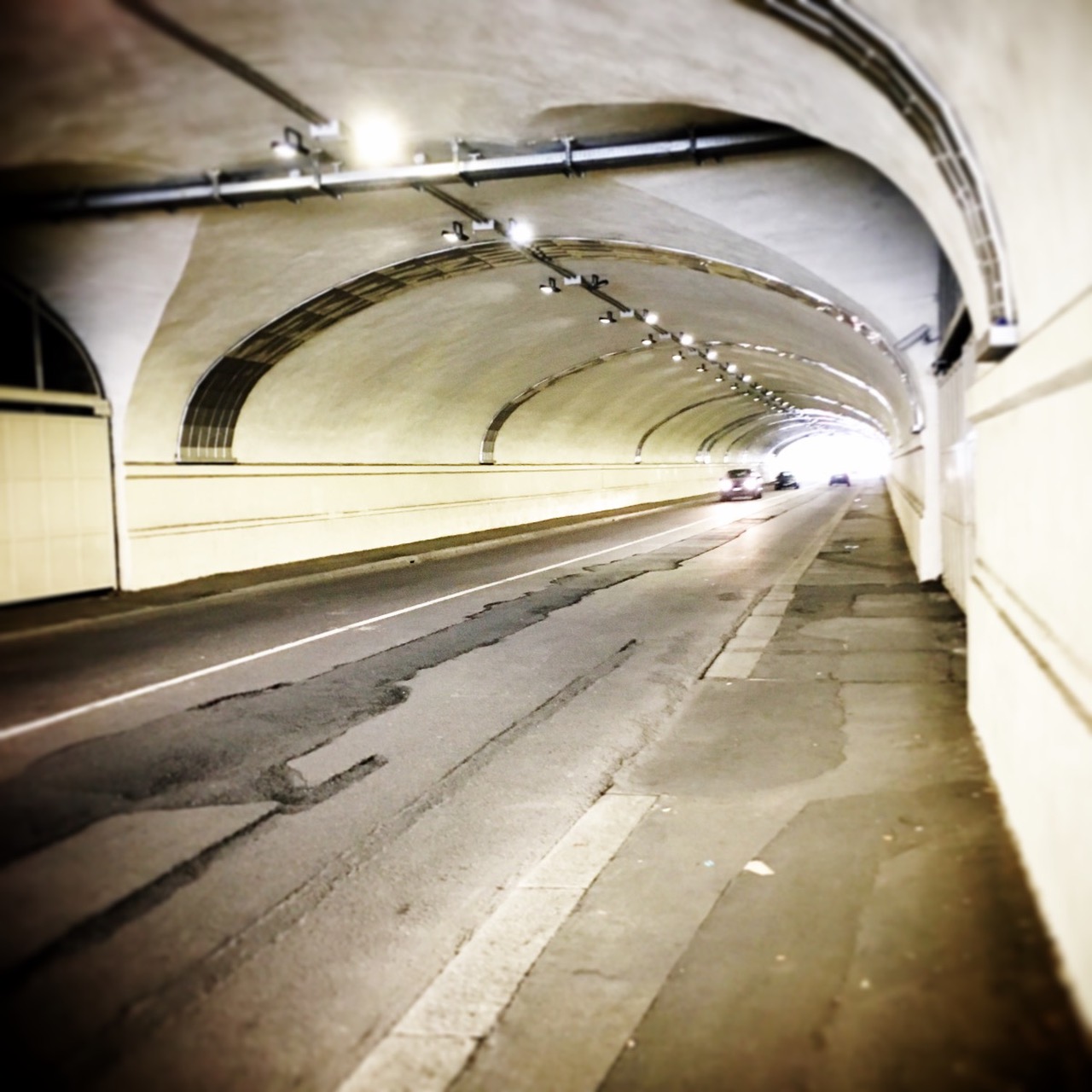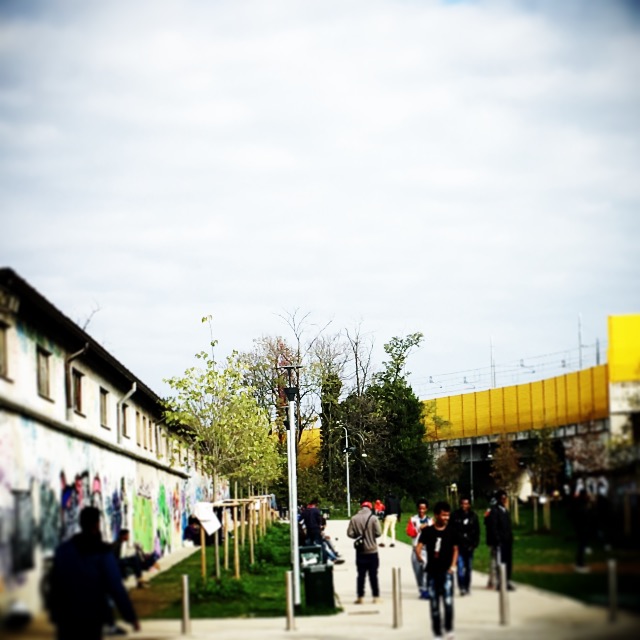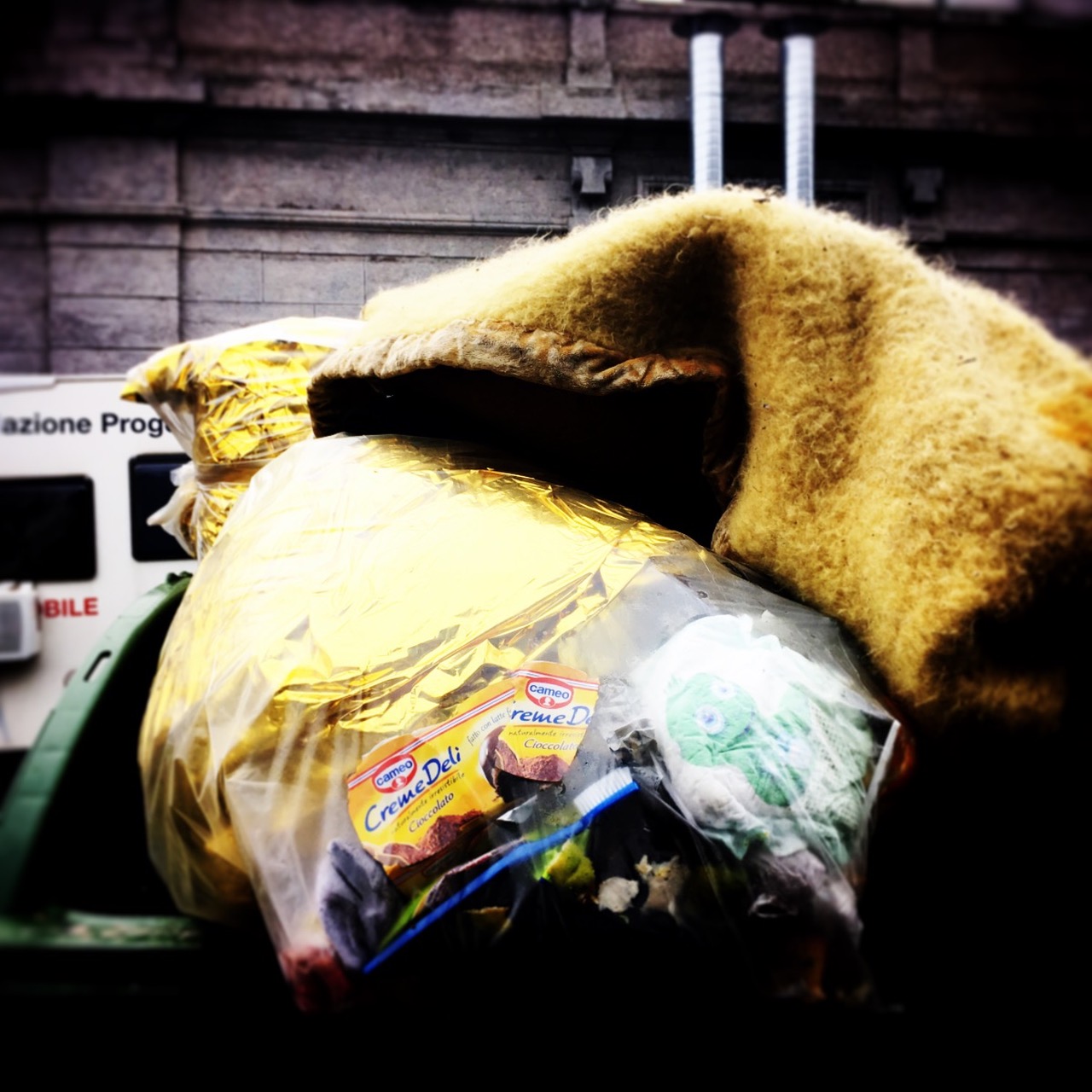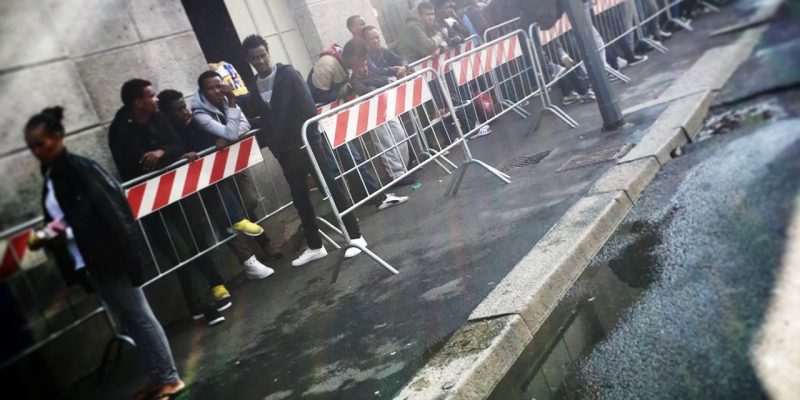When I first step into the “new” hub for migrants in transit through Milan, everything is different from the one that I knew, built out of a railway worker’s club under the Mortirolo Tunnel on Via Tonale. And yet, there is one thing I do recognize: the colours of children’s drawings. The staff had once covered an entire wall with them, and they have done the same here on Via Sammartini: those fluorescent pinks and greens are the focal point of the room where refugees first set foot. Here, however, the doctor has a bigger office, another large room is now a soup kitchen and, unlike the bar on Via Tonale, there are rooms to sleep at night. The energy, however, is the same as it was in the winter of 2015: a mixture of the refugees’ suffering as well as their willpower, a welcoming spirit that aims to soothe, no questions asked, and the inescapable weight of history.
The heavy bulk of Central Station – originally built in 1931, and for years blackened by time and dirt but recently restored to its original splendour – stretches from the monumental façade on Piazza Duca d’Aosta to the tracks that form its tail end. Via Sammartini runs along the left side past the crossroads where the old hub was, past the seafood restaurants, a concert venue, a row of railway warehouses with arched doorways. A kilometre north of the old hub a group of smiling African men wait at a bus shelter even though the bus stop has been eliminated. “We know, thanks,” they say, gesturing upwards. There was a shower of rain a few hours ago, and it’s a good spot to keep dry. A little further ahead, Via Sammartini bends narrowly to the left, past Largo San Valentino, beyond the working-class neighbourhood of Greco, and there is the hub, hidden away from everything else. There where the curve in the streets meets the trackbed is the Martesana Canal where the night before I arrived 70 men had to sleep outdoors because the hub was full.

Tunnel – Via Spoleto, Milan (Photo: Marina Petrillo)
Those who work for the Project Arca Foundation all remember the day the hub was born: October 19, 2013. President Alberto Sinigallia recalls: “The hub began at Central Station, on the steps of the mezzanine floor. We had just finished our Night of the Homeless, which is held every year on October 17. The next day we had a meeting with Councillor Majorino and Caritas because there were kids sleeping out on the marble at the station. Right there and then, as a solution for maybe ten people, it was decided to give them a bed and a hot shower over at the Caritas shelter. But we didn’t know an emergency was about to erupt, and that over the next days we would start getting hundreds of people every day. Overall, since then, 107,000 people have passed through Milan. A little under 40,000 in 2014, 40,000 in 2015, and 28,000 so far this year. In the history of the hub, the peak was 1,270 arrivals on a single day, in 2014.”
That winter I used to take a train from Central Station every week. Amid the wheeled suitcases and the escalators, it was impossible not to notice what was happening. In the freezing, voluminous atrium, young mothers were breastfeeding their infants while sitting on the marble benches; at the same time, Syrian and Afghan families with no luggage were camped out in the gallery. Groups of young men smoked cigarettes. Some kneeled on the marble floor to pray. Steaming hot dishes of pasta were being passed around by volunteers. And everywhere the crush of travellers, the announcements of trains and delays echoing high up in the canopies.
By July 2015, while hundreds of African refugees in Ventimiglia were calling for the French border to be opened, thousands of Eritreans, Somalis and Sudanese were queuing for a meal at Central Station. The African migrants in transit were – and are – survivors of shipwrecks between Libya and Sicily who had had to cross half a continent while fleeing poverty and war, and had witnessed unspeakable horrors: extortion, rape, friends and relatives left to die in the desert by traffickers, months of indentured servitude to smugglers.
Since that October day on the Central Station mezzanine floor, the hub has taken several forms. After responding to the first emergency just a few metres from the tracks, it has since found a safe location in one of the still-vacant commercial spaces outside. Walking by, one could see the hand-written signs posted on the windows by volunteers: Kitchen! Children! Clothes! Diapers and medicine came, together with blankets, clothes, toys, shoes. Then, early in the summer, Grandi Stazioni let the city the former cafeteria of the recreational club for railway workers on Via Tonale. The dilapidated premises were quickly repaired by the Corps of Engineers, the Department of Civil Protection and the Project Arca Foundation, which is still managing the hub together with the City of Milan, following an agreement with the prefecture.
Thankfully, Project Arca has been able to bring its day-to-day experience with the poor and the homeless in Milan, and the soup kitchens and street units in Ragusa, Turin and Rome, to the hub. This past April, after ten months, Grandi Stazioni suddenly revoked its lease with the intention of selling the premises; however, in return it offered the ones in Via Sammartini, which is where the city was able to reopen the hub on May 6. Over the last three years, the ethnic makeup of the refugees has changed, as has their status. “In the beginning,” Alberto Sinigallia says, “90% of them were Syrian families, 30,000 per year; mostly well-to-do folks who didn’t leave with all their possessions to avoid being robbed during their journey, but who would pass through Milan for 2-3 days, waiting for money to be sent to them from home.”
At that stage, only one out of four migrants requested asylum in Italy while the rest travelled on to other European countries. However, ever since the hotspot policy was put into place — mandating the identification of all refugees upon arrival and therefore binding them to seeking asylum in Italy as per the Dublin Regulation — the percentages have inverted, and most refugees disembarking in Italy have no choice but to seek asylum here. A “bottleneck” formed in Milan, and all the beds around the city that had once been reserved for the ever-changing crowd of those passing through are now occupied by Dublin migrants: asylum seekers stuck in Milan pending examination of their claims. “The hub used to give these exhausted travellers a modicum of rest before they resumed their journey,” Sinigallia explains, “and up until January this year, when France, the Balkans, Switzerland and the northern countries shut their borders, 90% of those arriving in Milan would leave again 4-5 days later, heading for northern Europe, in the hopes of reuniting with their family or friends. Now only 15-20% leave again, and they tend to stay in Milan much longer.” This is why the satellite beds that the city has been providing every day – 1,100 of them, with up to 1,400 in summer – are always taken, because the number of asylum seekers is rising. Some extra beds had already been set up at the Sammartini hub, in addition to all the services that were being provided on Via Tonale. As per their agreement with Arca, the city covers only 75 people, but thanks to donations and the Tende campaign by Fondazione AVSI, the hub actually hosts up to 500. On the most critical days in October the number reached 700, that is, until local health authorities set the cap at 500, and sometimes women and children had to take precedence. In November the hub hosted close to 420 people per night.

Giardino – Hub Via Sammartini, Milan (Photo: Marina Petrillo)
The hub became, in spite of itself, a so-called thermometer of migratory routes. Changes in the political response to the refugee crisis have consequences which become almost immediately visible here, within days. And, naturally, the city and the organizations have to come up with new solutions every time. Along with city volunteers in their orange vests, Save the Children and Albero della Vita are working here with children and minors; Informatici Senza Frontiere is providing workstations so that people can call home; an operator from Terre des Hommes has hygiene kits for travelling; Banco Farmaceutico provides medicines; Insieme Si Può Fare is passing out donated clothes; and the cultural mediators from Cambio Passo are providing more translators for Tigrinya.
Where Via Sammartini turns into a dead-end street there is a tile supplier and a small workshop with a guard dog barking behind a gate, some porta-potties, a small park with two rows of benches and a few young trees. On my first day at the hub, a sick migrant is loaded into an ambulance, three Eritrean girls go for a stroll, arm in arm, sharing a yoghurt, and a policeman tries to calmly send a troublemaker away. The municipal councillor for social policy, Pierfrancesco Majorino, is pacing, talking to the staff, then to a journalist, then into his cell phone while a little three-year-old boy runs around laughing, his pink anorak bulging out so much he can barely flex his arms. Around twenty boys are playing football out on the lawn, their first peaceful moment after months of travelling. There are two pregnant girls, and another one in the corner, speaking intensely into her cell phone. Laundry has been hung out to dry on the posts protecting the young trees. A few barriers have been placed outside the soup kitchen where a line will form at meal times.
The hub is a kind of village with its own topography. Migrants are registered at 120 Via Sammartini, right next to the warehouse; the beds are located at 118; Caritas runs the Immaculate Heart of Mary Shelter, with its red window fixtures and a plaque commemorating a visit by Mother Teresa at 114-118; further down the road there are more warehouses, and the soup kitchen is near the tunnel at the corner. The staff use the numbers as a shorthand for the various sections of the hub. At the old one someone had scrawled with a marker on the bar’s glass door: “Not the Hilton.” I ask Silvia Panzarin from Project Arca if she remembers that grafitti, and she replies with a smile: “You know, by the way, the Hilton nearby used to send us food all the time. I’ve never figured out who had it sent, they’d just leave it here for us.”

Hub – via Sammartini, Milano (Foto: Marina Petrillo)
The hub is so full of energy it could glow in the dark. And yet, you can live in Milan without even realizing it’s there. Across the street, the overflowing dumpsters; through the plastic bags you can see the gold of the emergency thermal blankets, the same ones that are used on rescue ships in the Mediterranean. Here, during emergencies, they are passed out to those forced to sleep outside. As I walk away, I spot the last one of them at the station. A Latin American man is using it as a container to peddle something, it’s crumpled up on the sidewalk like some gigantic Easter egg, gold and silver in the autumn of the industrial city. At the Migration Museum in Lampedusa, the Madonna of Migrants wears a tiny piece of thermal blanket as her veil.
Cover photo: Marina Petrillo
Translation by Francesco Graziosi









